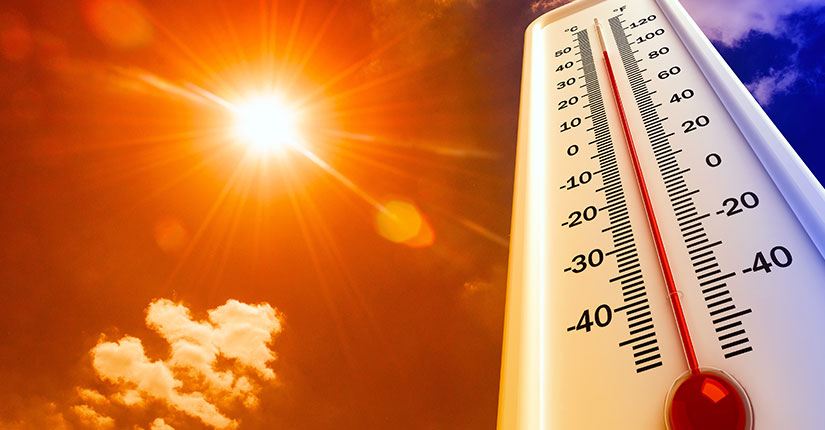
New Delhi- India is set to experience extreme heat during the April to June period, with the central and the western peninsular parts expected to face the worst impact, the IMD said on Monday as the country prepares for the seven-phase general elections starting April 19.
Addressing a press conference, Union Minister for Earth Sciences Kiren Rijiju said India is anticipated to experience extreme weather conditions in the upcoming two-and-a-half months and this coincides with the general elections in which around a billion people are expected to exercise their franchise.
“It is going to be very challenging for all of us. Since we are the most populous country in the world and face extreme weather conditions, it makes it absolutely necessary for India to prepare in advance,” he said.
India Meteorological Department (IMD) Director General Mrutyunjay Mohapatra said the anticipated increase in outdoor activities during the 2024 general elections could heighten public vulnerability to heat waves.
With greater exposure, there’s an elevated risk of heatwave-related health issues among the electorate and election staff, he said.
The IMD chief said above-normal maximum temperatures are likely over most parts of the country during the April-June period, with a high probability over central and western peninsular India.
Normal to below-normal maximum temperatures are likely over some parts of the western Himalayan region, northeastern states and north Odisha, he said.
Above-normal heatwave days are likely over most parts in the plains during April-June. Ten to 20 days of heat wave are expected in different parts of the country against a normal of four to eight days, he added.
Mohapatra said Gujarat, central Maharashtra, north Karnataka, Rajasthan, Madhya Pradesh, Odisha, north Chhattisgarh and Andhra Pradesh are likely to experience the worst impact of heat waves.
Though El Nino conditions — the periodic warming of waters in the central Pacific Ocean — are weakening, these will continue during April and May, according to the IMD chief.
“It is in agreement with the forecast of above-normal maximum temperatures and heatwave conditions in India,” he added.
The prevailing El Nino conditions fuelled record temperatures and extreme events the world over, with 2023 being the warmest on record. El Nino is associated with unusually dry and warm conditions over southeast Asia.
La Nina conditions — associated with bountiful monsoon rain in India — are likely to set in by the second half of the monsoon season, the IMD said.
The Met office said above-normal maximum temperatures are likely over most parts of the country in April, with a high probability over central south India.
Normal to below-normal maximum temperatures are likely over some parts of the western Himalayan region and northeastern states in April, the IMD said.
Above-normal heatwave days are likely over many areas in central India and the adjoining areas of the northern plains and south India in April, it said.
“Two to eight days of heat wave are expected in these regions against a normal of one to three days,” Mohapatra said.
Gujarat, Maharashtra, north Karnataka, Odisha, west Madhya Pradesh and Andhra Pradesh are predicted to experience the worst impact of heat waves in April.
The IMD said the country is “most likely” to gauge normal rainfall (88-112 per cent of the long-period average of 39.2 mm) in April.
“Normal to above-normal rainfall is likely over most parts of the northwest, and some parts of central and north peninsular India. Below-normal rainfall is likely over the east and the west coasts, parts of east, northeast and south peninsular India,” Mohapatra said.
Elevated temperatures pose significant risks, especially for vulnerable populations such as the elderly, children and those with pre-existing health conditions as they are more susceptible to heat-related illnesses such as heat exhaustion and heatstroke, the IMD said.
Lok Sabha polls in India will take place in seven phases between April 19 and June 1.
Follow this link to join our WhatsApp group: Join Now
Be Part of Quality Journalism |
Quality journalism takes a lot of time, money and hard work to produce and despite all the hardships we still do it. Our reporters and editors are working overtime in Kashmir and beyond to cover what you care about, break big stories, and expose injustices that can change lives. Today more people are reading Kashmir Observer than ever, but only a handful are paying while advertising revenues are falling fast. |
| ACT NOW |
| MONTHLY | Rs 100 | |
| YEARLY | Rs 1000 | |
| LIFETIME | Rs 10000 | |













